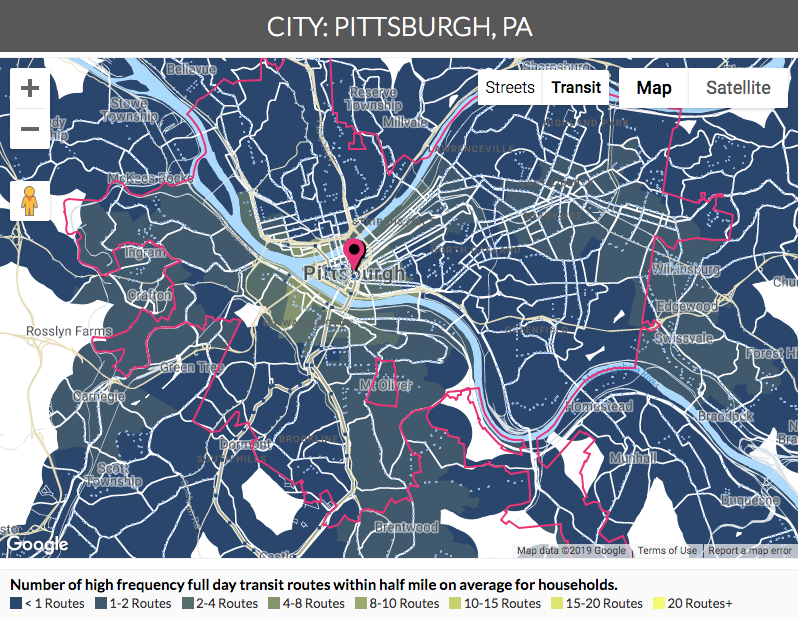City governments play an integral role in the prioritization and support of affordable housing. An important component necessary to ensure the success of equitable development is an evaluation of access to transit systems. This evaluation is not only one that connects the often transit-reliant lower-income residents to employment, education and healthcare destinations, but also one that promotes the likelihood of equitable futures. We look to our AllTransit case study in Pittsburgh to help us think forward.
Transportation costs are fundamental to housing affordability strategies. A 2006 study by Center for Neighborhood Technology (CNT) and the Center of Transit-Oriented Development, helped to conclude that transportation choices are heavily influenced by a comprehensive assortment of neighborhood characteristics. These include access to quality transit, employment, areas of high density, and general walkability, among other factors.
One potential tool that has the capacity to address this comprehensive issue is the Low-Income Housing Tax Credit (LIHTC). Pittsburgh, Pennsylvania is one of many cities that require LIHTC units (Figure A). Here, there are currently 6.13 units per 100 low-income households, according to a study by MPF Research. The map below (taken from the AllTransit tool) shows the location of the LIHTC units, by census block group. The units are mostly clustered in the city center (Hill District, Bedford Dwellings, Terrace Village) and northeast Pittsburgh (Friendship, East Liberty, Homewood West).

figure A
Figure B displays the amount of high frequency routes accessible to households between 7am and 10pm. The areas shaded green signifies block groups, which have access to 2 to 4 routes, while those in blue showcase neighborhoods with virtually no high frequency transit routes. In many cases, higher quality transit correlates positively to employment and citywide accessibility This is evident where households in the city center spend 14-15% of their income towards transportation costs, and where households in the northeast pay 17-20%. This 2-3% saving could alleviate spending for other needs.

figure B
Location matters when equity is at stake. It is paramount that low-income residents have access to the same level of opportunity as those living in affluent neighborhoods. This is not only to support those currently at-risk, but also to ensure the sustainability of a higher-quality of life for future generations. Data from the AllTransit tool helps us continue to profess the significance of connectivity (and lack thereof) to LIHTC housing developers and city officials now, and in the future.